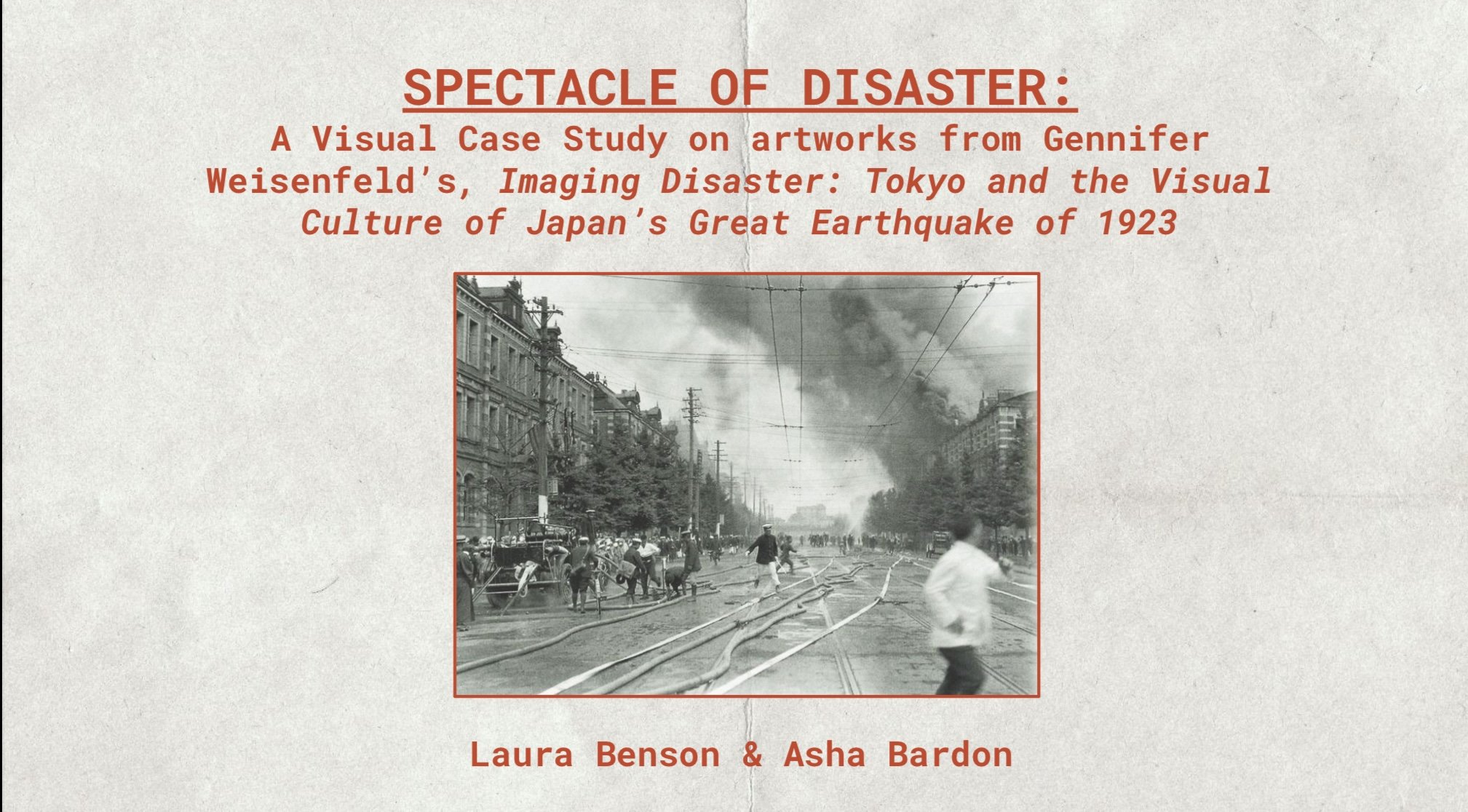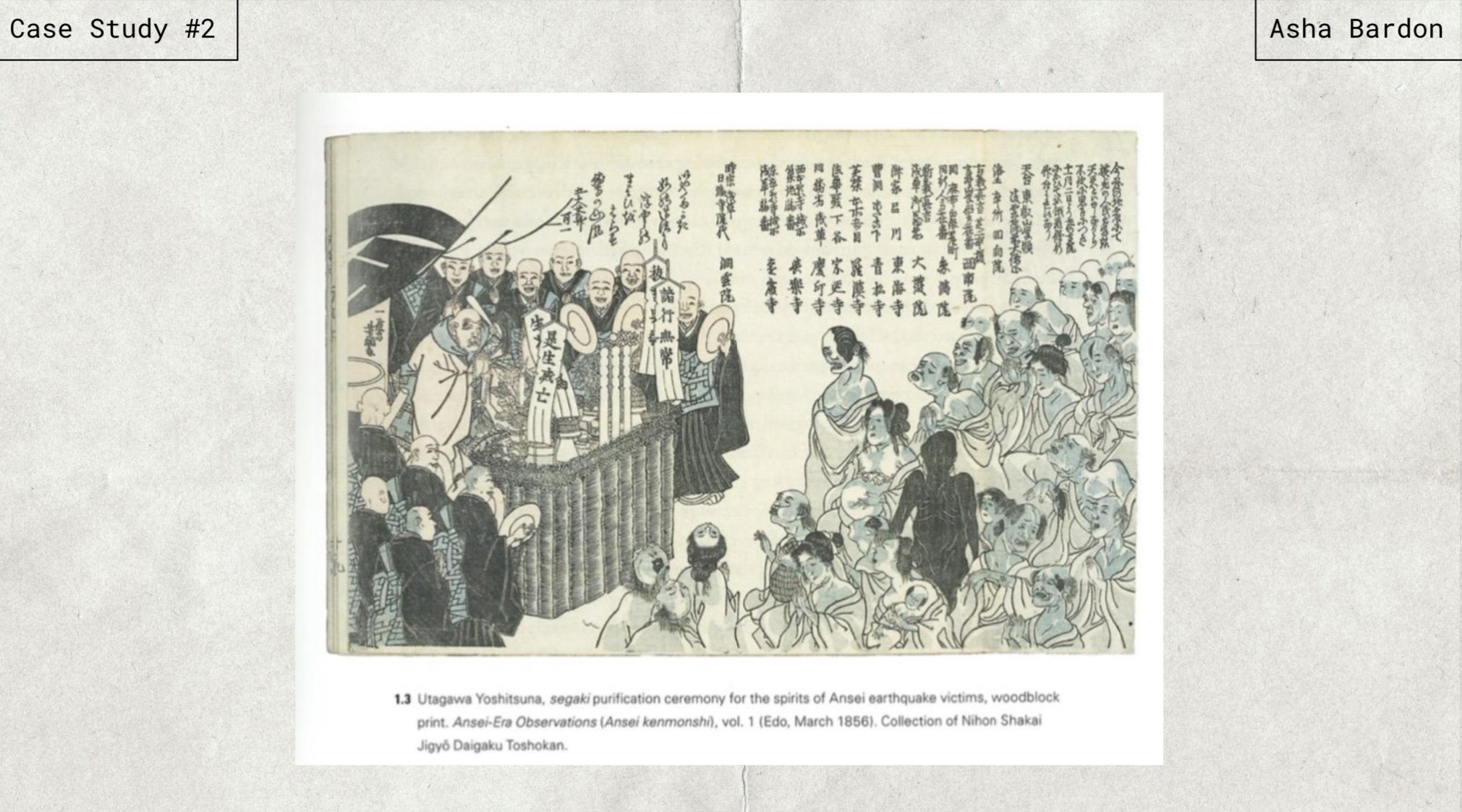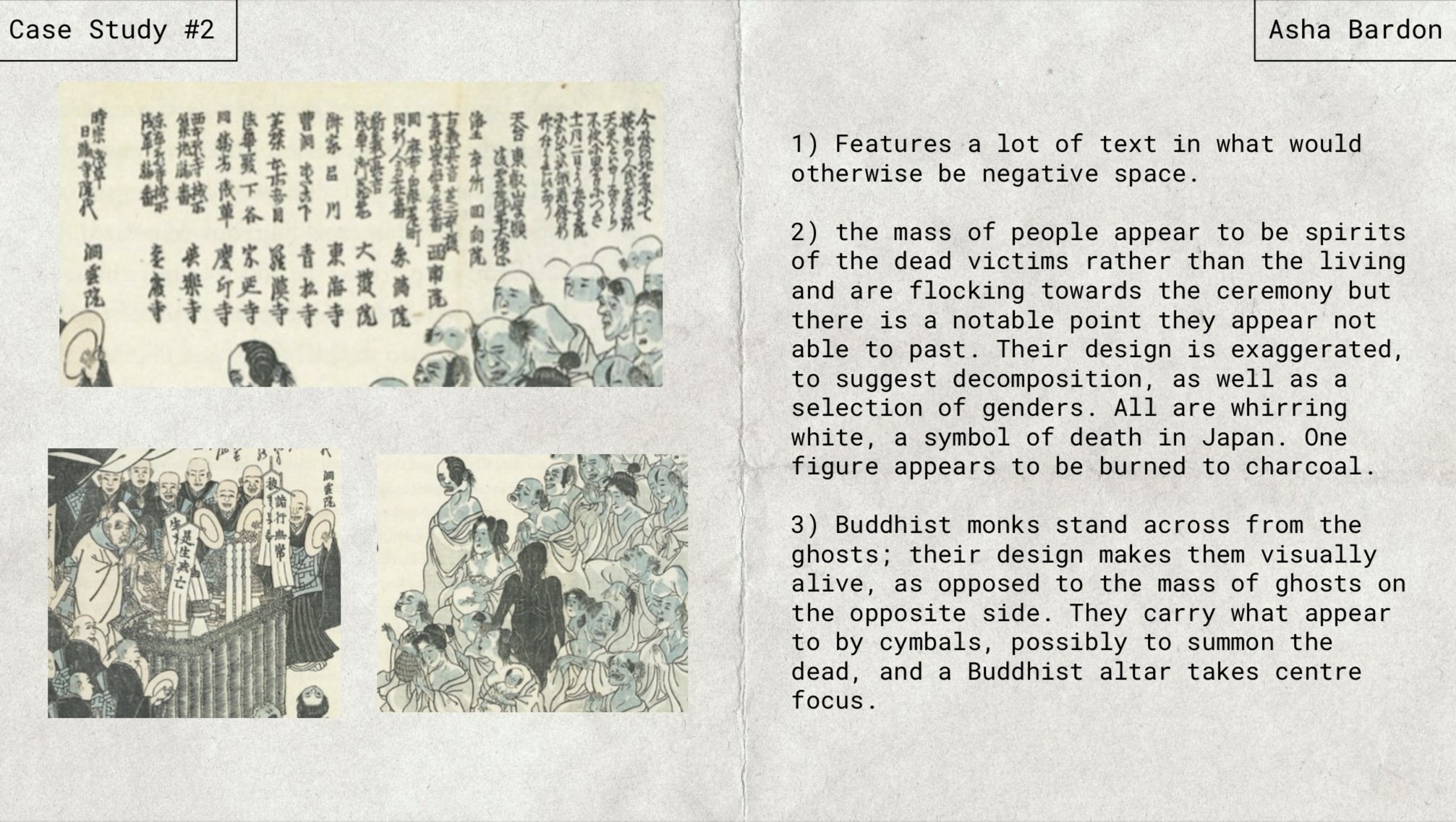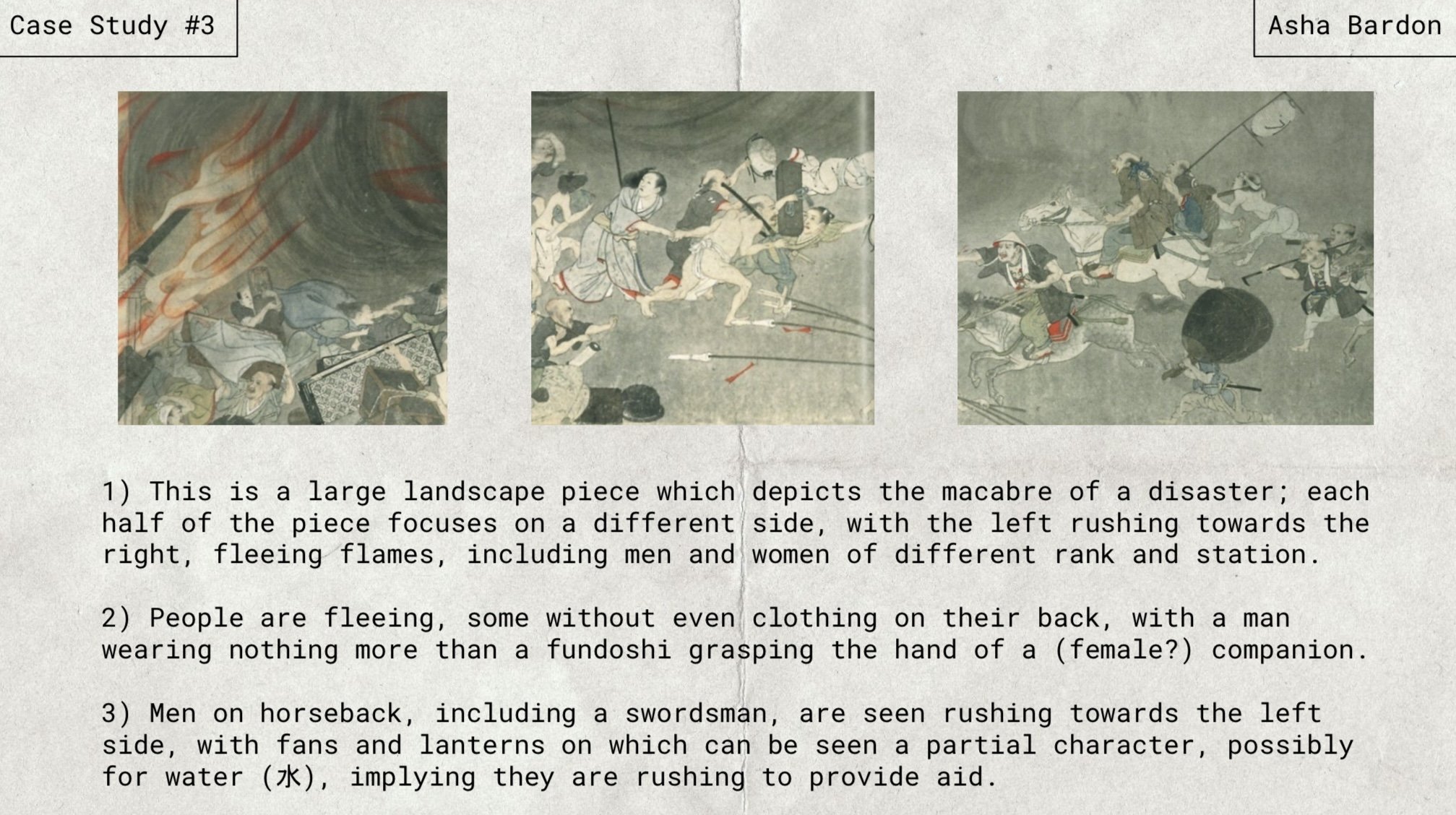Spectacle of Disaster: Visual Case Studies Between the UEA and University of Colorado—Boulder
As part of our Art History class, the UEA IJS group was piloting a scheme where we got together with the Japanese Studies MA students at the University of Colorado, Boulder. We met for quite a few sessions over the course of the semester and one of our activities was to do a joint presentation on a chosen topic, which for me was the Kantō Earthquake of 1923.
This particular subject was especially timely as the lecture, along with March’s CJS webinar, coincided with both the 3/11 anniversary and the terribly-timed 7.4 magnitude earthquake in the same area on March 16th 2022. This, not including the 2022 quake, was an intentional choice by our tutors given the importance of the date, as well as giving us a deeper chance to understand how Japan deals with natural disasters and this has changed over time.
I got confused when it came to earthquakes (Kantō got mixed up with Kobe in my brain :S) Laura did most of the work, simply because I still suck at Powerpoint but I did find it a worthwhile exercise as it forced me not just to look at art, but I also found several pieces drew my attention because of how they used liminal and negative space.
I created three case studies, which can be seen below, along with my observations:
This was one of the more challenging tasks for the semester but it was also one of the most educational, well time and, in some ways, horrific. It also reminded me that interdisciplinary is just that and we are all approaching one subject from many different angles. However this in itself is also a very good thing as it posters learning and understanding, as well as continued dialogue between scholars, cohorts and tutors. Something which I hope continues next year.






